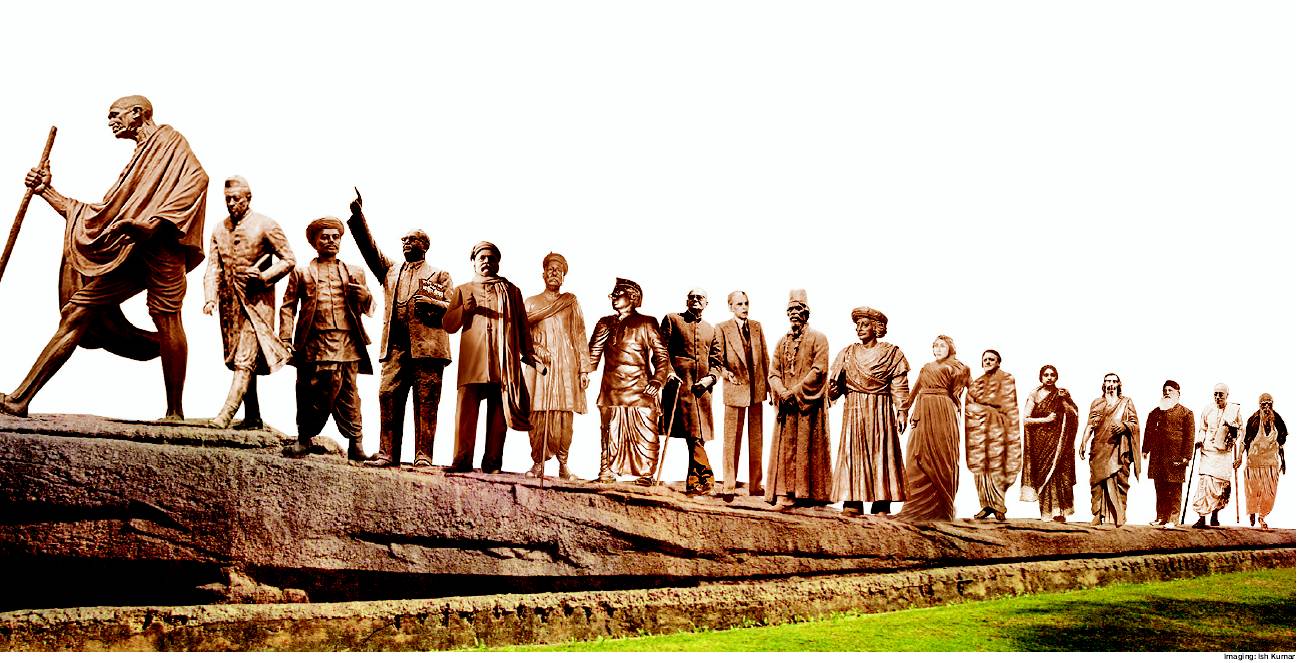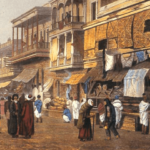(In the context of Bengal, Mysore, Punjab etc.)
Bengal
Murshil Quli Khan (1717-27) : In 1717, Murshid Quli Khan was appointed as Bengal’s Subedar i.e. governor by Mughal emperor Farrukh Siyar. Grant of the Governorship of Orissa also to him by Farrukh Siyar in 1719. He transferred the capital of Bengal from Dacca to Murshidabad.
Shujauddin (1727-39) : He was the son-in-law of Murshid Quli Khan. He was granted the Governorship of Bihar by Mughal emperor Muhammad Shah ‘Rangeela’ in 1733.
Sarfaraj Khan (1739-40) : He was the son of Shujauddin and was murdered by Alivardi Khan, the Deputy Governor of Bihar, in 1740.
Alivardi Khan (1740-56) : Legalised his usurpation by receiving a farman from Mughal emperor Muhammad Shah ‘Rangeela’ after paying him Rs.2 Crores. He prevented the English and the French from fortifying their factories at Calcutta and Chandranagore respectively.
Sirajuddaula : 1756-57
>> Alivardi Khan was succeeded by his grandson Sirajuddaula.
>> Sirajuddaula seized the English factory at Kasimbazar. On 20th June, 1756, Fort William surrendered but Robert Clive recovered Calcutta.
>> On 2nd Jan. 1757, Treaty of Alinagar was signed, where by Siraj conceded practically all the demands. British then captured Chandranagore, the French settlement, on March 1757.
>> The Battle of Plassey was fought on 23 June, 1757. Owing to the conspiracy,
the Nawab was defeated.
>> The following betrayed the Nawab :
- Mir Jafar : Mir Bakshi
- Manikchand : Officer in charge of Calcutta
- Amichand : Rich Sikh merchant
- Jagat Seth : Biggest banker of Bengal
- Khadim Khan : Commanded a large number of Nawab’s troops.
Mir Jafar : 1757-60
>> The company was granted undisputed right to free trade in Bengal, Bihar and Orissa. It received the zamindari of 24 Parganas. Mir Jafar, however, fell into arrears and was forced to abdicate in favour of his son-in-law Mir Qasim.
Mir Qasim : 1760-64
>> Mir Qasim ceded Burdwan, to Munger.Midnapore and Chittagong. He shifted his capital from Murshidabad to Munger.
>> Mir Qasim soon revolted as he was angry with the British for misusing the dastak (free duty passes). However, having been defeated by the British, he fled to Awadh, where he formed a confederacy with Awadh ruler Shujauddula and Mughal emperor Shah Alam II.
>> The Battle of Buxar (1764) : Mir Qasim, Shujauddaula and Shah Alam II were defeated by Munro.
>> Successors of Mir Qasim: Mir Jafar (1764-65), Nazmuddaulah (1765-66), Saifuddaula (1766-70), Mubaraquddaula (1770-72)
>> On Mir Jafar’s on death, his son Nazmuddaula was placed on the throne and signed a treaty on 20th Feb, 1765 by which the Nawab was to disband most of his army and to administer Bengal through a Deputy Subedar nominated by the Company.
>>Clive concluded two separate treaties of Allahabad with Shah Alam II (12 Aug” 1765) and Shujauddaula (16 Aug ., 1765).
Dual Government of Bengal : 1765-72
>> Dual Government of Bengal started in 1765.
>> The Company acquired both Diwani and Nizamat rights from Nazmuddaula, the Nawab of Bengal. But the company did not take over direct administration and revenue collection.
>> Warren Hastings ended the dual system of government in 1772.
Mysore
Haidar Ali : 1761-82
>> Haidar Ali began his career as a soldier in the service of the Mysore state, later he became the faujdar of Dindigul. He established a modern arsenal in Dindigul with the help of French.
>> In 1761, he overthrowed the Nanjarajar (the powerful Prime Minister of Wodeyar king Krishraja I) and usurped power, though continuing to recognise Krishnraja I as the lawful ruler.
>> First Anglo-Mysore war (1766-69) : Haider Ali defeated the British. The Treaty of Madras (1769) signed.
>> Second Anglo-Mysore war (1780-84) : Warren Hastings attacked French port Mahe, which was in Haidar Ali’s territory.
>> Haidar Ali led a joint front with Nizam and Maratha and captured Arcot (Capital of Carnatic state).
>> In 1781, Haidar Ali was defeated at Porto Novo by Eyrecoot.
>> He died during the Second Anglo-Mysore war.
Tipu Sultan 1782-99
>> Haidar Ali was succeeded by his son Tipu Sultan in 1782.
>> He continued the Second Anglo-Mysore war till 1784.
>> The Treaty of Mangalore (1784) was signed by Tipu Sultan which ended the Second Anglo-Mysore war.
>> Third Anglo-Mysore war (1790-92) : Maratha and Nizam aided the British, Cornwallis capatured Bangalore. By the Treaty of Seringapatnam (1792), Tipu ceded half of his territory.
>> Fourth Anglo-Mysore war (1799) : Lord Wellesly attacked and Tipu Sultan died.
>> Tlpu was the only Indian ruler who have understood the importance of economic strength as the foundation of military strength.
>> Tipu established the embassies to France, Turkey, Iran and Pegu to develop foreign trade.
>> Tipu planted a ‘tree of liberty’ at his capital Seringapatnam and became a member of Jacobian Club.
Punjab
>> Guru Gobind Singh, the 10th and the last Guru of the Sikhs, transformed the religious sect into a military brotherhood.
>> In the confusion and disorder that followed the invasion of Nadir Shah and Ahmad Shah Abdali, the Sikhs increased their military strength and became a strong power.
>> Maharaja Ranjit Singh (1792-1839) : He was the greatest Indian ruler of his time and founder of the Sikh rule in the Punjab. Born in 1780 at Gujranwala, he occupied Lahore in 1799 and made it his capital. He conquered Amritsar in 1802, occupied Ludhiana and after incessant wars, annexed Kangra, Attock, Multan, Kashmir, Hazara, Bannu, Derajat and Peshawar. He died in 1839.
>> Successors of Ranjit Singh : Kharak Singh (1839-40), Naunihal Singh (1840), Sher Singh (1841-43), Dalip Singh (1843-49).
>> The Sikh power was broken by the British after the death of Ranjit Singh.
>> First Anglo-Sikh war (1845-46) : Sikhs were defeated in all the four battles at Mudki, Ferozshah, Aliwal and Sobraon. The Treaty of Lahore (1846) ended the war. Sir Henry Lawerence became the first resident.
>> Second Anglo-Sikh war (1848-49) : Dalhousie annexed Punjab. Sir John Lawerence became the first chief commissioner of Punjab.
| Kingdom | Year | Founder | Annexation |
| Nawab of Bengal | 1713 | Murshid Quli, Jafar Khan | 1765 (Treaty of Allahabad) |
| Maratha-confederacy | 1720 | Baji Rao I | 1801 (Subsidiary Alliance) |
| Nawab of Carnatic/ Arcot | 1720 | Saadatulla Khan | 1801 (Subsidiary Alliance) |
| Nawab of Avadh | 1722 | Mir Muhammad Amin Saadat Khan ‘Burhan-ul-Mulk’ | 1801 (Subsidiary Alliance), 1856 (Dalhousie) |
| Nizam of Hyderabad | 1724 | Mir Qamruddin Chin Kilich Khan ‘Nizam-ul-Mulk’ | 1798 (Subsidiary Alliance) |
| Mysore | 1761 | Haidar Ali | 1799 (Subsidiary Alliance) |
| Punjab | 1792 | Ranjit Singh | 1849 (Dalhousie) |
Featured Image Courtesy: https://shorturl.at/pIP19



